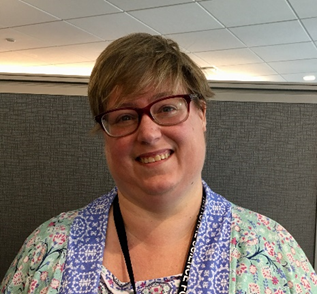What were you doing before you came to the NSF?
I am an Associate Professor in the Department of Biology and Director of the Integrative Life Sciences PhD Program at Virginia Commonwealth University, where I had been a faculty member since 1993.
What attracted you to work for NSF?
A desire to serve the community, to give back to NSF, to expand my knowledge, to recharge my research, to challenge myself, and based on visits as a panelist, to work with a group of great people who enjoyed working with one another.
What was your first impression of NSF? Has this impression changed since you began serving as a rotator?
A large organization with lots of very competent, very organized, very busy folks enjoying what they do, and doing their best to serve the scientists and citizens of the US. Nope, my impression has not changed other than to be even more impressed with how well NSF is organized, coordinated, and team-based.
What were the personal goals you most wanted to accomplish while at NSF?
Recharge my research and get at least two manuscripts written and submitted for publication, decide on where and how to move my research forward, get my weight down and health under control, and decide on the direction for the next phase of my professional career, between research/ academia, or continued public service in science policy.
What surprised you most about working at NSF?
The high amount of turnover due to large number of rotating program staff and how this impacts the teams, and how much of the job involves being offsite for teleworking, outreach, conferences and independent research and development (IR/D). I also was delighted that my past experience as a leader and with helping others learn about leadership skills has been recognized, appreciated and leveraged. I also am thrilled that the MCB leadership is working to continue to improve all aspects of the division.
What are some of the challenges of serving as a rotating program director?
As a rotator, the biggest challenge is being away from home most of the week. Communication with my current student actually is better because we are more organized and efficient during our scheduled chats and meeting each week. The other major challenge was balancing the on-boarding, training, and getting ready for the first panel during the first three weeks of being here. Getting guidance and information was easy, prioritizing what needed to be done first and what could wait was more challenging, but I received lots of guidance once I asked.
What would you tell someone who is thinking about serving as a program director at NSF?
That NSF has a great work environment, is hugely intellectually stimulating, and that the work being done is meaningful, valuable, and valued. To rotators, I would add that NSF makes every possible effort to ensure (and encourage) continuation and enhancement of scholarship while here through IR/D and makes it possible to be home more than I expected through teleworking. I also would add that people here care and look out for one another. Since arriving, pretty much every night that I am here late, I am reminded of finding a better work-life balance, in a caring way. I did not expect that, and VERY much appreciate the genuine sentiment.
When your friends/colleagues find out that you work at NSF, what do they say or ask?
All of them have been thrilled, knowing that being chosen to work here, even for a short time, is a great honor. Those who know me best have commented that this very much fits with my current outlook on career and life, which has become focused on service and giving back. My wife has commented that I look no less tired, but instead of the worry lines, I now have far more smile lines than even just a month ago, and that yes, I have lost some weight since being here.
Is there anything else you would like to share with the readers?
Being here has been all that I had hoped it would be and more, and I thank everyone for their help, smiles, patience, guidance and more patience as I get up to speed. I am really, really, really pleased to be here after deciding to take a chance to do something very different from what I was doing six weeks ago. I am greatly looking forward to the rest of my time in MCB.











